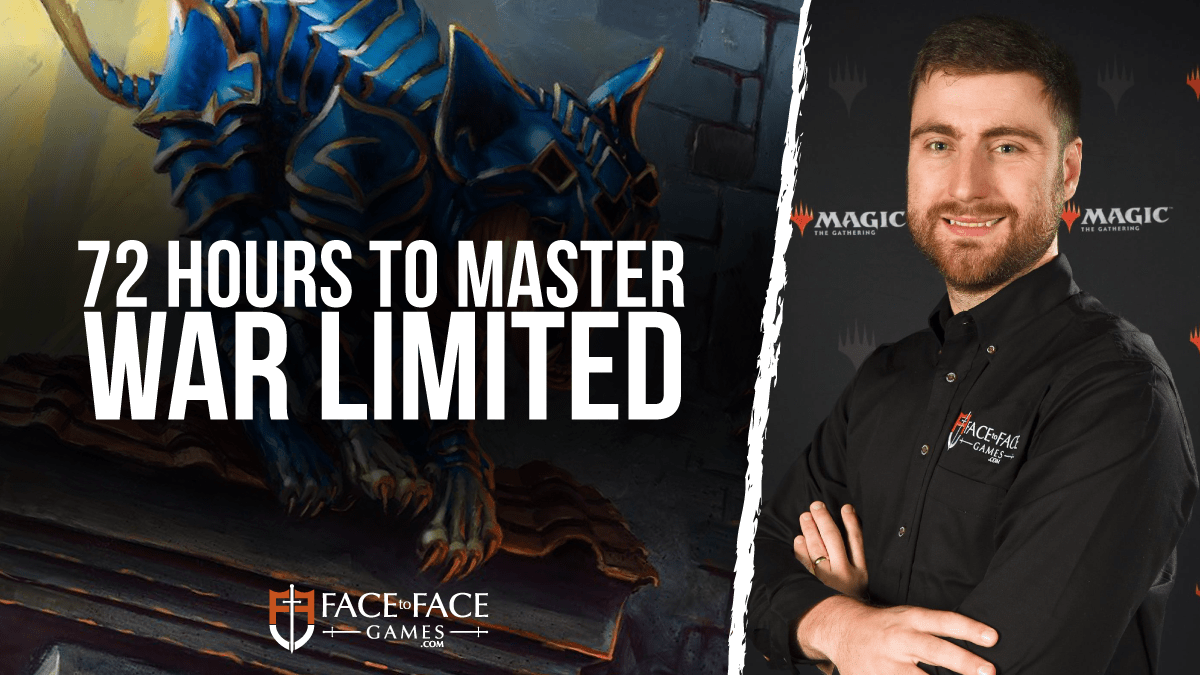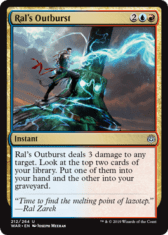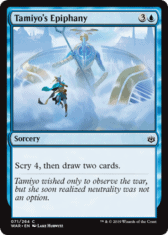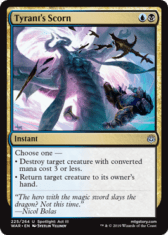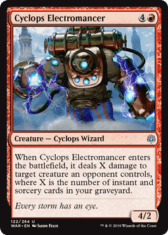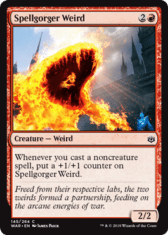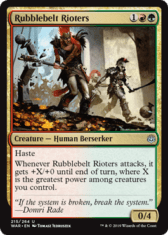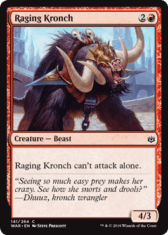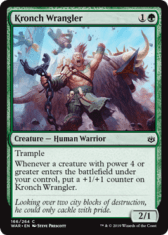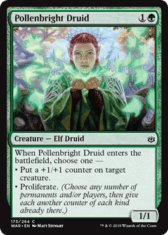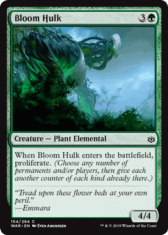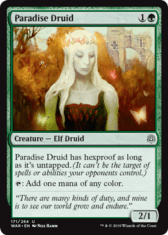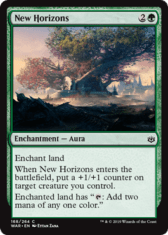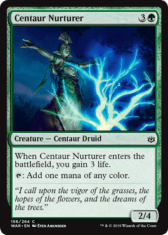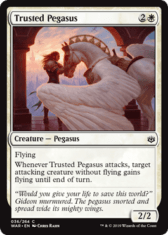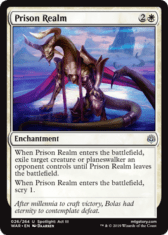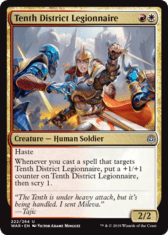We had 72 hours to learn War of the Spark Limited for the Mythic Championship this past week in London, England. I’m going to tell you how we did it.
I personally had another disappointing result at the tournament overall, given that I didn’t win a single Constructed match for the second MC in a row. That said, my Limited performance continued to be strong.
I spent the last week with team Face To Face Games focusing on learning the format as quickly as possible and I’ll share what we learned as I write. We’d all agreed to lock in our Modern decks by the previous weekend so that when we met at the team testing house in London on Tuesday we were ready to focus exclusively on Limited. Overall I felt quite prepared for the Limited portion of the event, but with the middling results in the Constructed portion we’ll try to revisit how we’re preparing for the next MC in Barcelona.
Limited Preparation
72 hours remain …
While I’m used to learning Limited formats under somewhat tight time constraints, as I described in my guide to learning Limited. This was a bit different, I was devoting three full days to the format rather than a few evenings spread over a couple weeks. I started by spending a bit of time skimming through the spoiler to get the gist of the set. Then during my flight over to London listened to the Limited Resources common/uncommon review while also following closely along with the spoiler in front of me.
64 hours remain …
Wizards had graciously given me an invite to the WAR early access event running 24h starting shortly after I’d landed in London. While the event only allowed Sealed play it still gave me a quick, efficient and even fun introduction to actually playing with the cards — yes LiBrizzi, I did have fun!. As Sealed wasn’t the focus of the Mythic Championship I just wanted to play with as many of the colours and cards as possible. I went through 10-15 Sealed pools playing only 3-4 games with each pool trying to play with as many archetypes as possible.
40 hours remain …
Once the preview event was done Wednesday afternoon the team was comfortable with most of the cards and we needed a way to test the Draft format. Some teams had met a couple days earlier than us and elected to print out or proxy a massive number of cards to test with. I balked at this option both given the effort to create the cards and being a lover of the environment.
Talking to some teams about all the cards they printed and proxied to test the #MTGWAR limited format for #MythicChampionshipII hurts my tree loving heart.
Please @MagicEsports for the next event please give us a few days of access to the draft format online and save a tree. pic.twitter.com/wPowy991Gl
— Morgan McLaughlin (@Fozefy) April 28, 2019
We instead decided to try using an online Draft simulator hosted by ZeldaZach. While organizing a Draft on such programs can be a bit tedious we managed to run four Drafts with the program in the evening and three more the following morning. We tried reviewing the deck each team member had drafted and played one or two matches with each deck on Cockatrice before quickly firing another.
As a side note, I’d much prefer to be supporting WoTC’s official products, but due to their choice to have a championship before the set was released we had little choice. Through these test Drafts I managed to draft Boros Aggro, Dimir Spells, RGw ramp, Izzet Spells, Simic Proliferate, Golgari Midrange and lastly this bomby Grixis Control deck.
[Deck Title= Grixis – Morgan McLaughlin]
[Creatures]
1 Kiora’s Dambreaker
1 Aven Eternal
1 Fblthp, the Lost
1 Vampire Opportunist
1 Shriekdiver
1 God-Eternal Kefnet
1 Eternal Skylord
1 Erratic Visionary
1 Tithebearer Giant
1 Thunder Drake
[/Creatures]
[Spells]
1 Nicol Bolas, Dragon-God
1 Sorin’s Thirst
2 Tamiyo’s Epiphany
2 Enter the God-Eternals
1 Ral’s Outburst
1 Chandra’s Pyrohelix
2 Spark Harvest
3 Mana Geode
[/Spells]
[Lands]
1 Mountain
8 Swamp
8 Island
[/Lands]
[/Deck]
18 hours remain…
After the three Thursday morning Drafts we headed to the site where we were excited– and somewhat surprised due to this still being before the prerelease — to each receive nine packs of War of the Spark. Of course we immediately got down to business and drafted twice on-site before heading to bed….to Draft a third and final time! In these Drafts I drafted Gruul aggro, Rakdos aggro and Selesnya Proliferate rounding out my experience with a wide variety of archetypes.
Ah the joy of bed drafting. https://t.co/3WYPXwNXZ3
— Morgan McLaughlin (@Fozefy) April 25, 2019
10 hours remain…
The rest of the team decided to actually go to bed, so I fired up Arena to play a few more games. Unfortunately drafting was still unavailable, which as I mentioned earlier, is both frustrating from a player’s perspective and a suspect business decision. I quickly rattled off a successful Sealed league before catching some Zzz’s.
0 hours remain…
In my Draft I opened up my first pack with a very mediocre first pick between [Card]Arlinn’s Wolf[/Card] and [Card]Spark Harvest[/Card]. I believe the Reaver is fine, but I’d been liking the green decks and had some suspicion the Grixis control decks I liked could end up being over-drafted. I got rewarded immediately when I was passed two [Card]Rubblebelt Rioters[/Card] and a [Card]Domri’s Ambush[/Card] over the next five to six picks and then opened a [Card]Nissa, Who Shakes the World[/Card] in my second pack. I could have really used another [Card]Raging Kronch[/Card] and his Wrangler friend to consolidate my four power synergies. But, as it stood my deck ended up a couple cards short of a great deck. I ended up taking a loss to a very powerful Izzet Spells deck and was fairly happy with my 2-1.
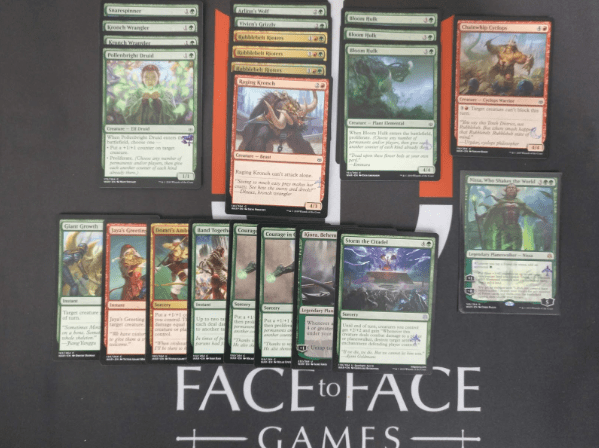
Archetype Guide
General Impressions
In general I’ve found this format quite interesting and unique. When it was announced there would be 36 planeswalkers and every pack would contain one there was some fear that they’d dominate the format. But, I don’t think this has been the case and they’ve added an interesting level to the format where you want to grind while also play to the board to pressure walkers. Previously most planeswalkers created a sort of mini game where the player without the walker would try to kill it, and if they couldn’t, they’d lose. However, in this set most have felt fairly balanced, with the uncommons being playable but not overbearing and the rares being bombs but (mostly) not unbeatable.
I’ll write what my current thoughts are about the format, though I’m sure these archetypes will change and grow as the format evolves. In general I’ve found the format to be fairly slow. The aggro decks are disadvantaged due to the many hyper-efficient removal spells and a higher toughness-to-power ratio in the format. On the flip side, not having some aggressive elements in your deck can lead to being somewhat weak to the format’s many planeswalkers. I believe almost every colour combination can be successful, though I’d probably rank Orzhov and Azorius as the worst because they have no clear deck identity. I’ve roughly ordered each of these deck’s by power level:
Blue-Based Control
This is my pick for the best deck in the format. It’s usually Dimir or Izzet though you’ll also be happy to splash a third colour for either more removal or bombs. The deck focuses on grinding out card advantage and winning the late game. I think the key card you should be prioritizing is [Card]Tamiyo’s Epiphany[/Card], of which I’d play as many as three or four-of, and the efficient removal spells in whichever colour you’ve paired blue with. The best options are [Card]Ral’s Outburst[/Card] or [Card]Tyrant’s Scorn[/Card]. [Card]Erratic Visionary[/Card], [Card]Kasmina, Enigmatic Mentor[/Card] and [Card]Jace’s Triumph[/Card] are also happy to play this role in a pinch. The other part of what makes this deck so good are the evasive threats blue provides. They give the archetype the ability to pressure opposing plansewalkers with cards like [Card]Aven Eternal[/Card] and [Card]Eternal Skylord[/Card].
Izzet Spells
This deck is similar to the Blue control deck listed above, but is less interested in playing a long game. Instead, you’ll be looking to quickly pressure your opponent and gain a tempo advantage with cards like [Card]Burning Prophet[/Card], [Card]Spellgorger Weird[/Card] and [Card]Saheeli, Sublime Artificer[/Card] backed up by blue’s card advantage and red’s many removal spells.The most aggressive versions of this deck can even be happy playing [Card]Sarkhan’s Catharsis[/Card].
Gruul Beatdown
This is my pick for the premier aggressive deck. While the format is lacking good aggressive two-drops Gruul makes up for it by hitting extremely hard with its three and four-drops. At two, the deck is looking to play [Card]Kronch Wrangler[/Card], [Card]Pollenbright Dryad[/Card] and [Card]Tibalt’s rager[/Card]. On three you get the fantastic [Card]Rubblebelt Rioters[/Card] along with [Card]Raging Kronch[/Card] and [Card]Arlinn’s Wolf[/Card]. You also add two excellent removal spells to red’s already impressive suite with [Card]Domri’s Ambush[/Card] and [Card]Band Together[/Card]. This deck is also one place I like playing [Card]Kiora, Behemoth Beckoner[/Card] if you have six or seven four power creatures.
Green-Based Proliferate
Proliferate exists across green, blue and white with green containing the hallmark cards for the mechanic. Naturally the proliferate deck functions best with a green base and either blue or white as its secondary colour. Despite one of the best proliferate cards being [Card]Merfolk Skydiver[/Card] I generally prefer the white deck a bit more, as +1/+1 counters are more heavily supported there and the Selesnya uncommons are quite powerful. Your early plays should focus on cards applying +1/+1 counters like [Card]Pollenbright Dryad[/Card] — which fulfills both sides of the proliferate coin. [Card]Ugin’s Construct[/Card], [Card]Iron Bully[/Card], [Card]Teyo’s Lightshield[/Card] and [Card]Rising Populace[/Card] all filling in admirably. Your best populate cards are all reasonable even with no counters on the field, but get better and better the more counters you have — cards like [Card]Bloom Hulk[/Card] and [Card]Huatli’s Raptor[/Card]. Not that the repeatable effects such as [Card]Evolution Sage[/Card] and [Card]Grateful Apparition[/Card] can get completely out of hand and overwhelm your opponent over a few turns. Don’t sleep on [Card]Courage in Crisis[/Card] either, this can provide a big boost of damage for the more aggressively slanted variants.
Lucas Siow — multi-time GP Toronto Champion — worked with the team for the latter half of our Limited testing and drafted this superb Selesnya proliferate deck. He unfortunately lost the third round of his Draft to finish 2-1 with this beauty.
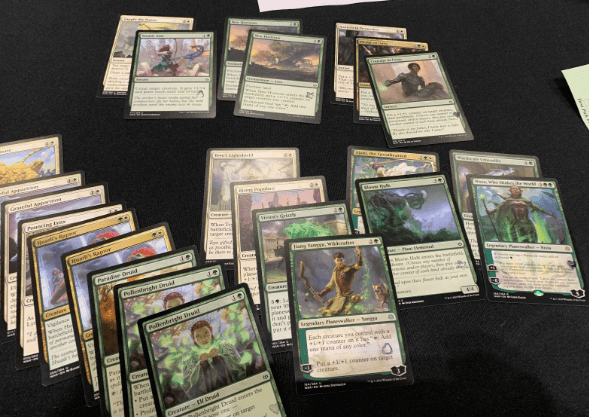
Four Colour Green
Given that this is a slow, bomb-heavy format and green has a bunch of fixing — the four and five colour green-based decks are alive and well. This deck relies heavily on opening and picking bombs obviously, because it’s going to have to use a lot of slots to make it’s mana work. That in mind, you’re not going to be able to Draft this deck every time. Often you’ll see a couple splashy cards early in the Draft and dive in.
The interesting part of the fixing in this format is that it’s all rainbow fixing — you get all five colours. This means your best option is frequently trying to play as many forests as possible, splashing one other colour, then just a handful of cards spread across the other three colours.
Boros Aggro
I’ve added this archetype mostly just for completeness, however to me this is pretty clearly at the bottom of the pile. There are many three-toughness creatures and efficient removal spells able to blank all of Boros’ two-drops, making most simple curve-out draws fairly ineffective. With this in mind the key cards are those that can remove THICC blockers such as [Card]Prison Realm[/Card] or to fly over them with [Card]Trusted Pegasus[/Card]. [Card]Pouncing Lynx[/Card] is a perfect example of a card the deck needs to play, but gets blocked pretty effectively. This means you’ll need to have tricks at the ready.
Conclusion
With no competitive Limited events in my calendar before the next set release the format is mostly already complete for me. Limited is my favourite format, so I’m somewhat disappointed, and while I’m sure I’ll fire up a few Drafts on Arena once it releases it’s hard to commit too much time with no event to play for. My focus will be on the new Standard format as I expect that will be the format of the Arena Mythic Qualifier I qualified for last month.
With the announcement that the London Mulligan rule will continue to be tested at the next Mythic Championship in Barcelona I’m planning on revisiting my mulligan simulations in my next article. I had a lot of great feedback and generated some ideas for improving the algorithm, some mulligan strategies and I’ll consider ways to handle interaction.
Thanks for the support everyone, it’s been greatly appreciated!
